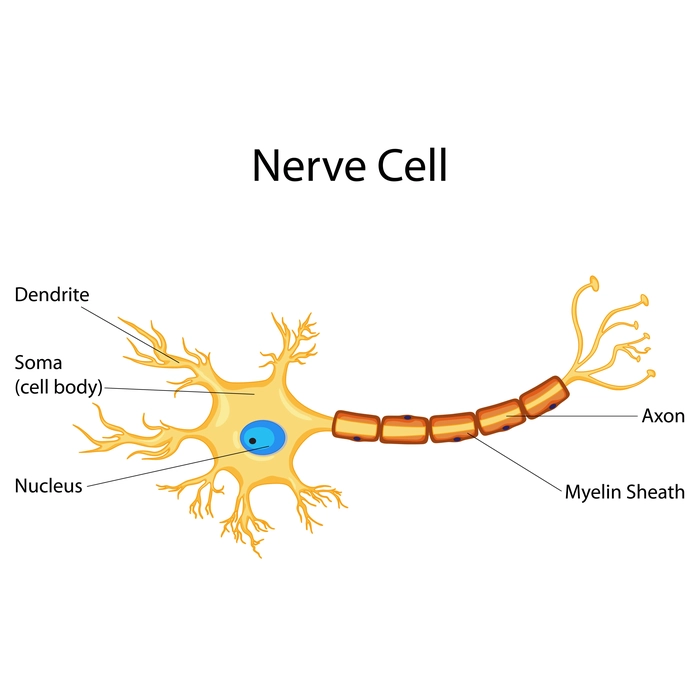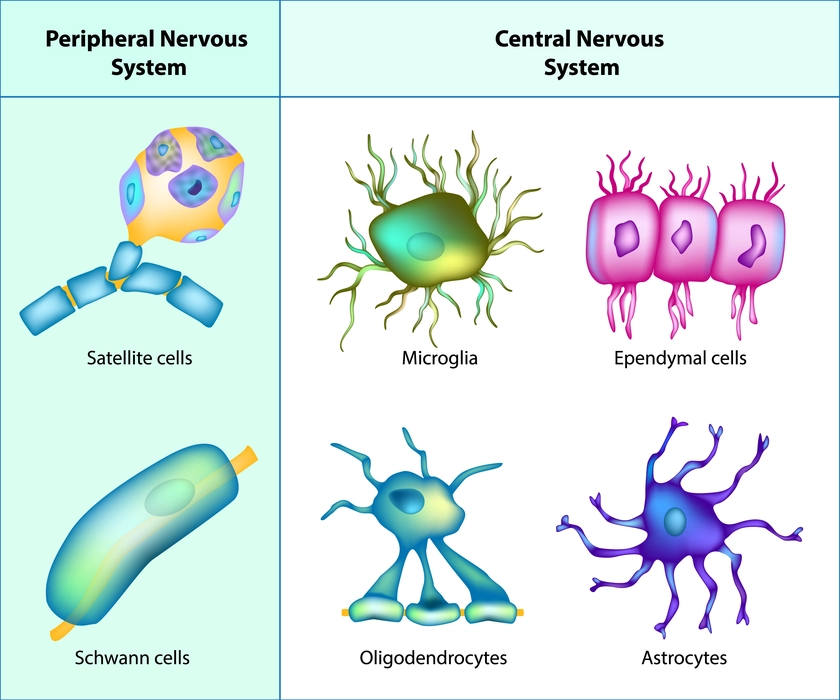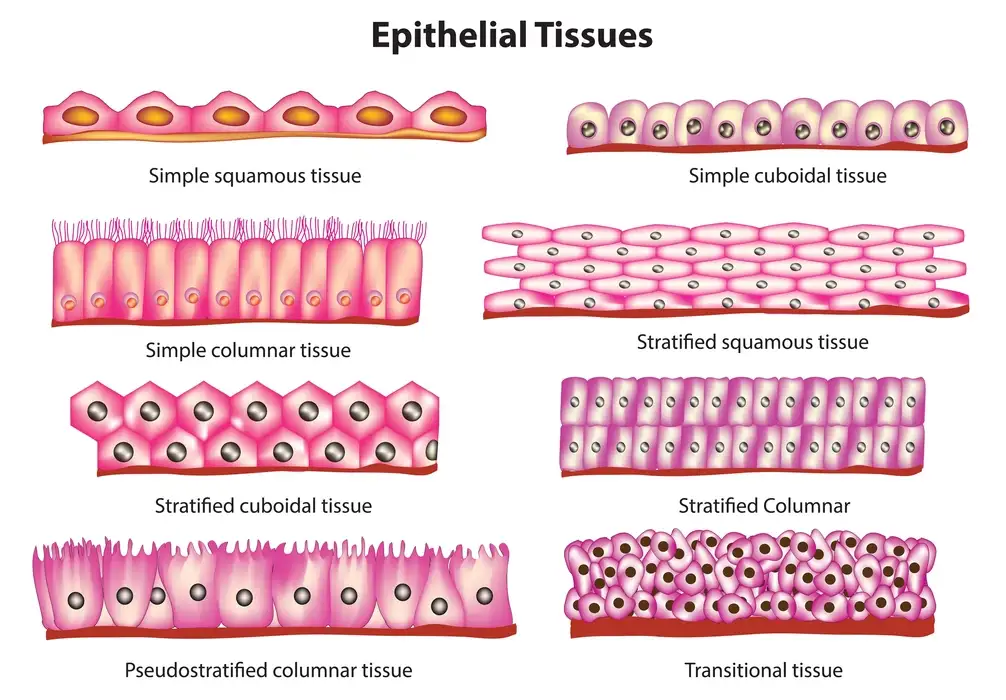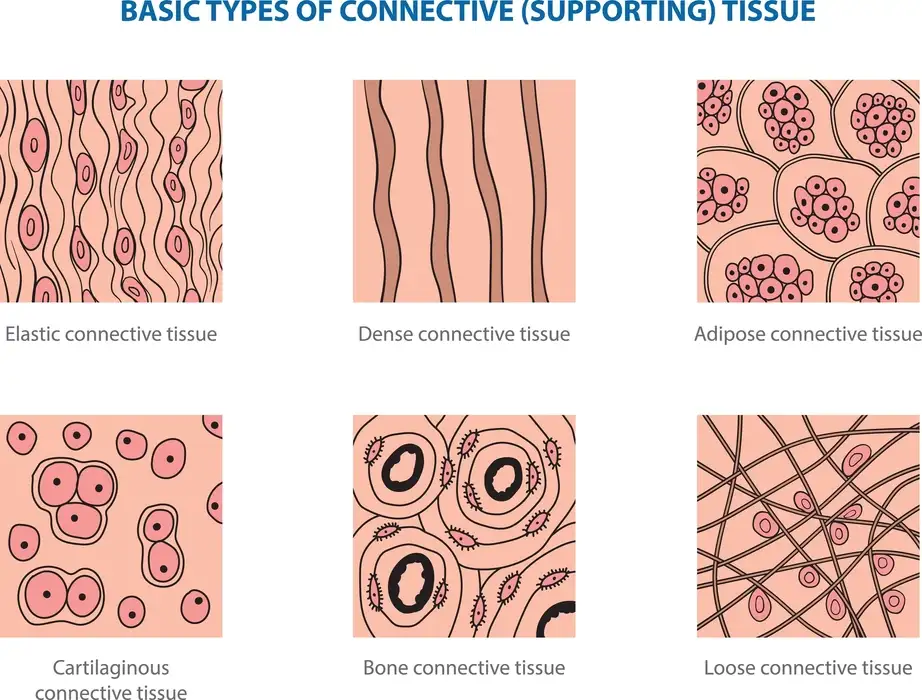Introduction
The smallest structural and functional units in all living things are cells. Together, several cells make up tissues. Plants and animals both have eukaryotic cells and hence all cells contain many membrane cell organelles such as the nucleus, nuclear membrane, endoplasmic reticulum, etc. Organs are made up of tissues that perform the same functions. To carry out specific tasks, tissues are organized in a specific way. Animals and plants are made up of several tissues. Meristematic tissue and permanent tissue are the two types of tissues found in plants. Epithelial, connective, muscle, and nerve tissue are the four different types of tissues found in animals. Animal tissues solely include living cells, but plant tissues contain both living and dead cells.
Plant tissues
Organs are made up of tissues that are united to carry out certain functions. These organs and tissues work together and help in growth, development, and reproduction. Plant organs include leaves, roots, flowers, fruits, and stems, which are made of many types of tissues.
The majority of plant tissues are composed of dead cells, and they give the plants their structural stability and defense against extreme environmental changes. Plant tissues can be divided into two kinds, such as permanent and meristematic tissue.
Let our expert teachers be your guide toward improving your grades and reaching your highest potential. Watch our Video Science Tuition Class 7 Lesson 11
Types of plant tissues
- Meristematic tissue: Meristematic tissues support the plant’s primary growth. These tissues’ cells regularly divide, and they can be found at the root and stem tips. Spherical, tightly packed cells with no interstitial space are a common feature of meristematic tissues. These cells contain a thick cytoplasm surrounding the nucleus. Depending on where they are, meristems can be divided into
- Apical meristems-At the growing tip of the stem and roots apical meristems are present. They help increases the length of the plant.
- Lateral meristems- Lateral meristems are located at the lateral portion of the root or stem. These cells help in increasing the girth of the plant. They include cork cambium and vascular cambium which assist in secondary growth.
- Intercalary meristems-These tissues are usually located in the internodes, nodes, or base of the leaves. They help in the growth of the leaves in the direction of light also they help in increasing the height of the plant.
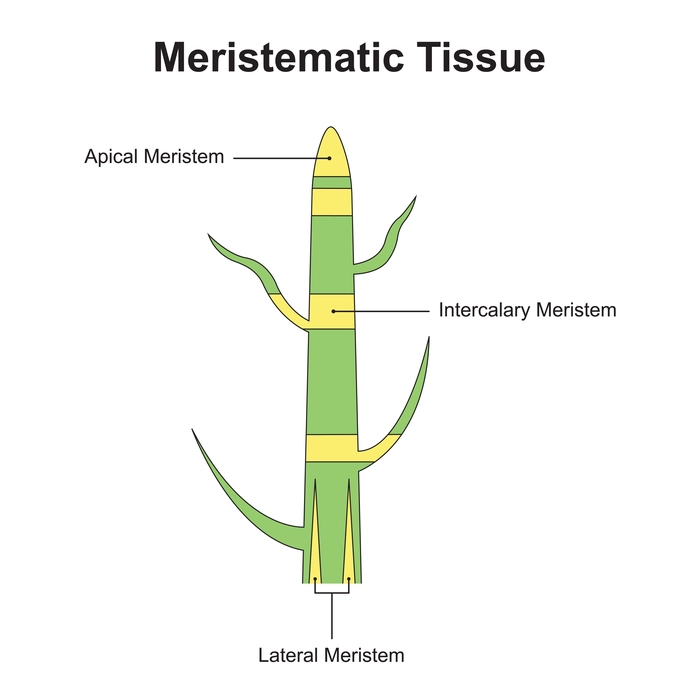
- Permanent tissue: Permanent tissues are those that have fully developed and lost the capacity to reproduce. The permanent tissues are formed by the division and differentiation of the meristematic tissues.
- Simple permanent tissues- Cells are identical and simple in simple tissues. These tissues are made up of cells that share a common origin, a similar structure, and related functions. Further, these tissues are divided into the parenchyma, collenchyma, and sclerenchyma.
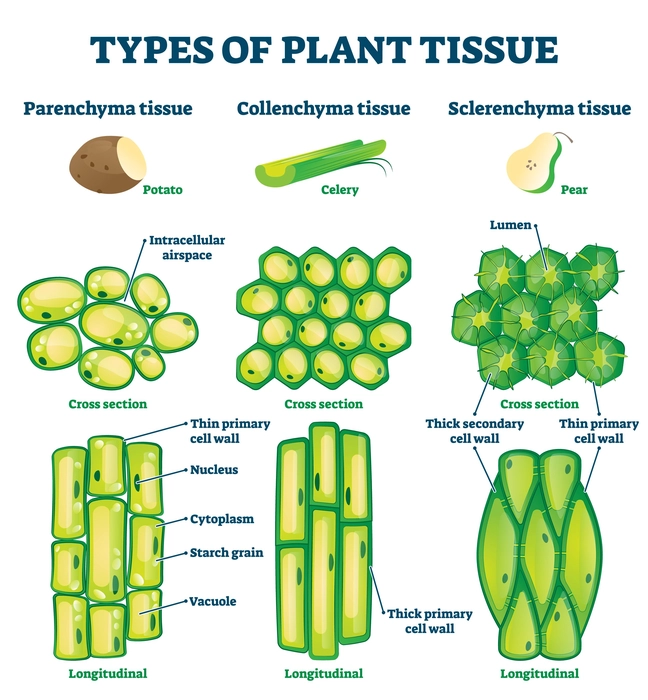
- Complex permanent tissues: These tissues are made up of various cells which are complex in nature. Phloem and xylem are examples of complex permanent tissues. These tissues aid in the transportation of food, water, and mineral throughout the plant body.
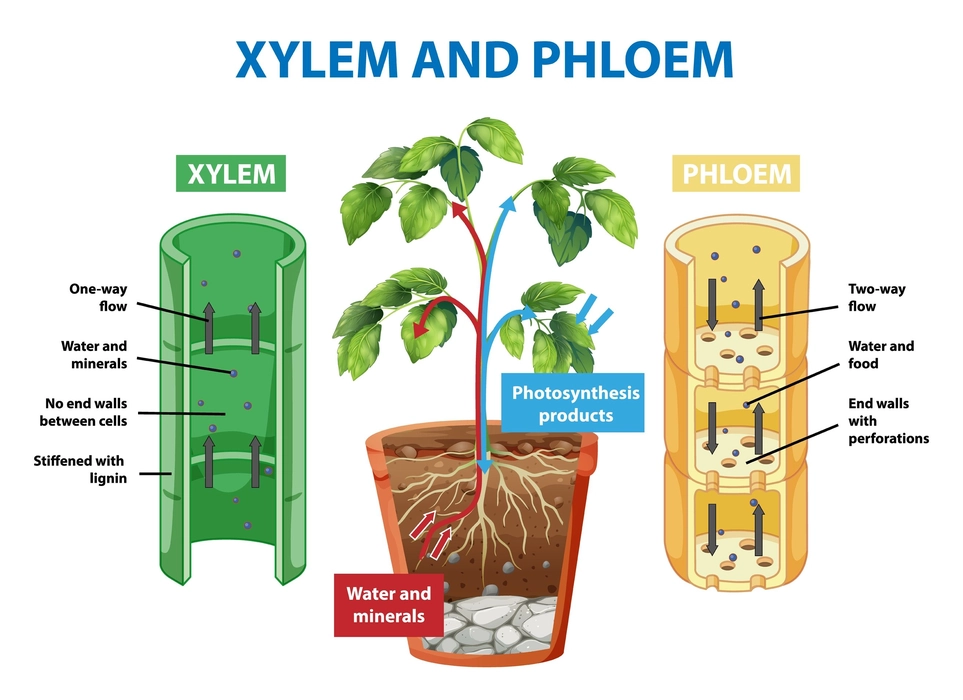
- Animal tissues are constructed from a collection of the animals’ cells. Animals have a range of tissues that each carry out a specific function for the organism. Organs are created when the tissues come together. Organisms are composed of organs. So, with the aid of tissues, a multicellular creature is created as a whole structure. The animal body contains four main types of tissues: epithelium tissues, muscular tissues, nerve tissues, and connective tissues. These tissues have various origins and functions.
Types of animal tissues
- Epithelial tissues
- These were the first to arise during evolution and can be single or multilayered.
- Covers both the body’s interior and exterior organs. They are very tightly packed and lack an intercellular matrix.
- The cells may regenerate.
- Major functions of these tissues are to protect layers of organs, absorb, and secrete various fluids.
- Based on the structure of the cells, there are four different types of epithelial tissues: squamous, cuboidal, stratified, and columnar epithelium.

Muscle tissues:
- Muscle tissues are the tissues that surround the muscles.
- They aid in the body movement of the animal by contraction and relaxation.
- Skeletal muscle, smooth muscle, and cardiac muscle are the three different types of muscles found in an animal body.
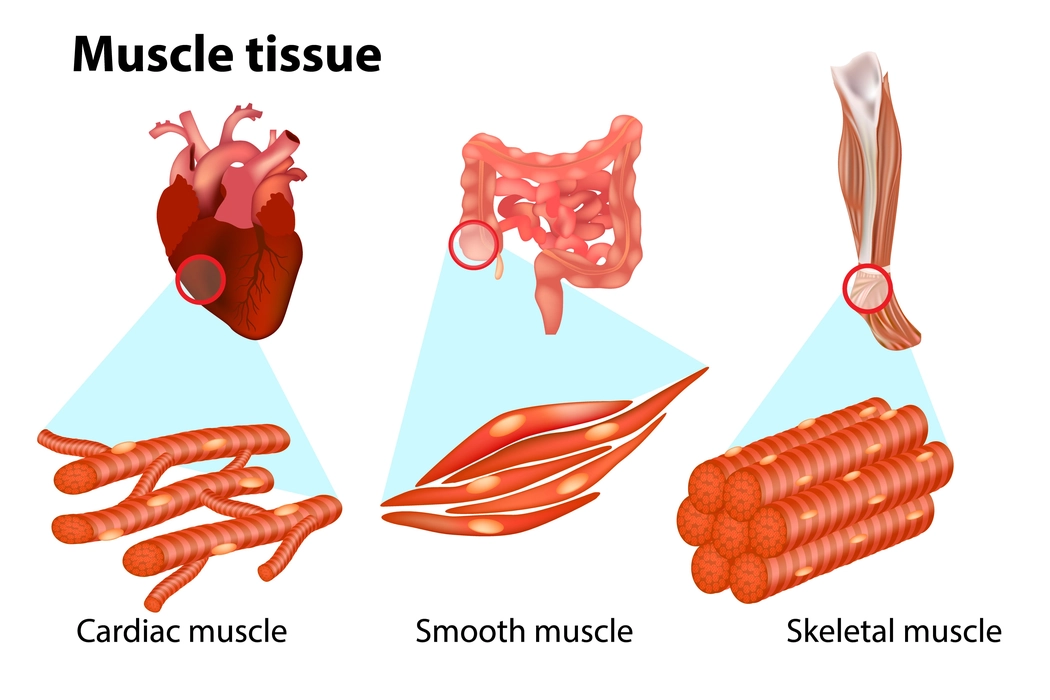
- Connective tissues:
- These tissues assist in connecting organs, other tissues, and various other body parts.
- They also assist in the transportation of various materials throughout the body.
- There are six different types of connective tissues: cartilage, adipose, lymph, bone, and blood.
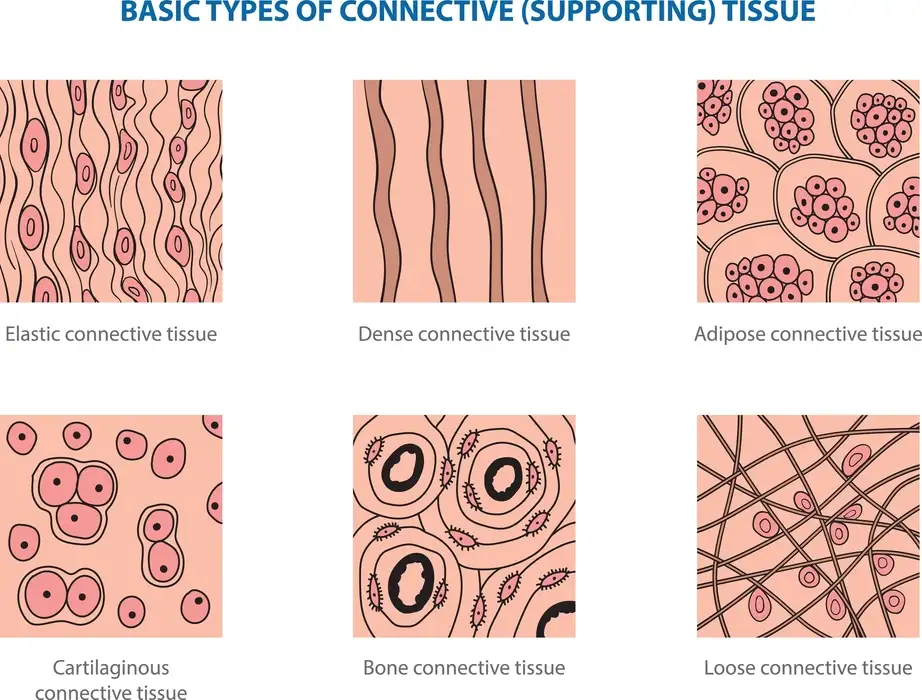
- Nervous tissues:
- The electrochemical impulse transmission between various neurons is carried out by these cells.
- They help in the control and coordination of the entire body.
- Nervous tissues are made up of nerve cells like neurons and neuroglia.
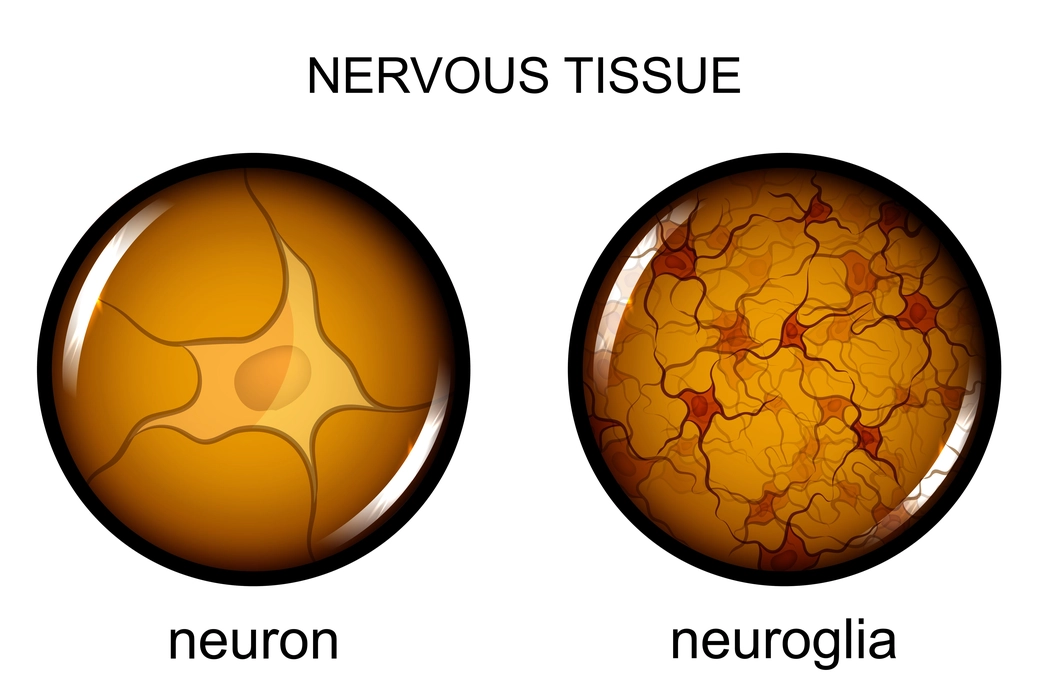
Differences between plant and animal tissue
| Plant tissues | Animal tissues |
| They are defined as groups of cells performing the same task in plants. | They are defined as groups of cells performing the same task in animals. |
| The tissues here are comparatively simple. | The tissues here are comparatively more complex. |
| They have two types of tissues- Permanent and Meristematic tissues. | They are of 4 types- Epithelial, Connective, Nervous, and Muscle tissues. |
| Differentiation is seen in both permanent and meristematic tissues. | No such differentiation is seen in animal cells. |
| These include living as well as dead tissues. | It mostly includes living tissues. |
| Maintenance of plant tissue requires less energy. | Maintenance of animal tissue requires more energy. |
| The cells of these tissues have cell walls. | The cells of these tissues are devoid of cell walls. |
| They provide mechanical support to the plants. | They help in movement and locomotion. |
Summary
The cells that makeup tissues collaborate to carry out various functions of the body. Meristematic and permanent tissues are the two categories of plant tissues. Epithelial, connective, neuronal, and muscle tissues are the four different types of tissues found in animals. Plant tissues support nutrient delivery and plant growth, whereas animal tissues support body movement or locomotion. This is the major distinction between plant and animal tissues. The healthy development and functioning of both plants and animals depend on both plant and animal tissues respectively.
Frequently Asked Questions
1. What are the similarities between plant and animal tissue?
Ans: Following are the similarity between plant and animal tissues-
- Cells of both tissues are eukaryotic i.e. they contain all cell organelles such as the Nucleus, nucleolus, RNA, DNA, Endoplasmic reticulum, etc.
- These tissues lead to the formation of organs and organ systems.
- Cells of these tissues release ATP which is used as an energy source to carry out all cellular activities.
2. Give the components of the xylem and phloem.
Ans: Phloem tissue aids in transporting materials throughout the plant body and is made up of sieve tubes, companion cells, phloem parenchyma, and phloem fibers. The xylem transports water and nutrients throughout the plant body and is made up of tracheids, vessels, xylem parenchyma, and xylem fiber.
3. Describe sclerenchyma.
Ans: Sclenechyma is simple permanent tissue found in plants. It provides mechanical support to plants and is made up of dead cells. These dead cells are highly lignified. Sclerenchyma is mostly found in the mature parts of the plants such as barks, thick stems, etc. It is made up of long and narrow cells. Cells are usually without protoplasts.

